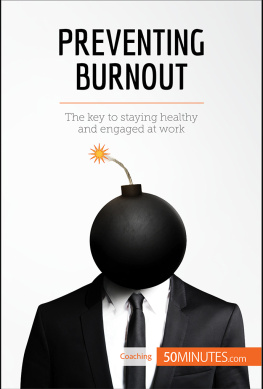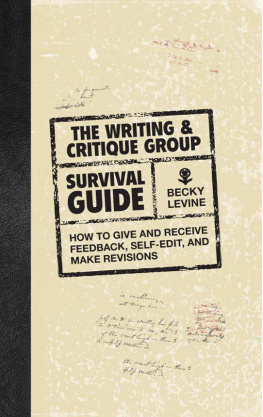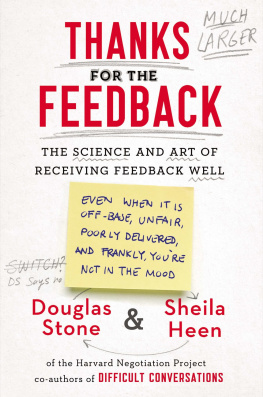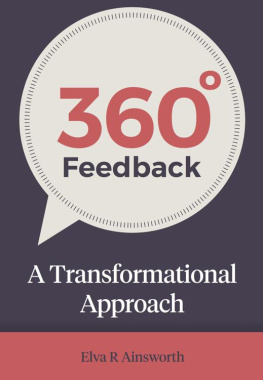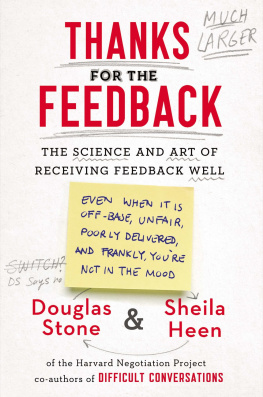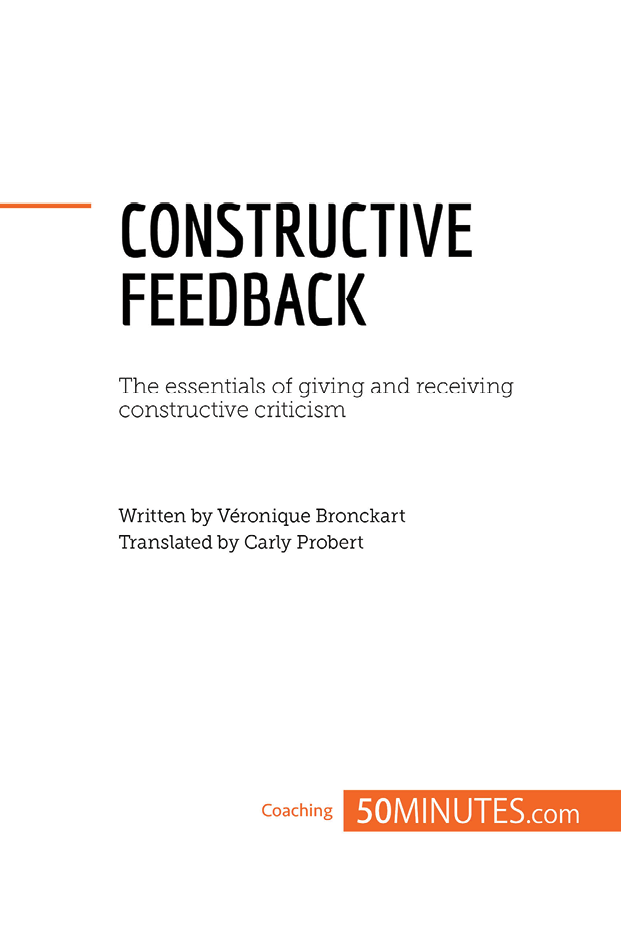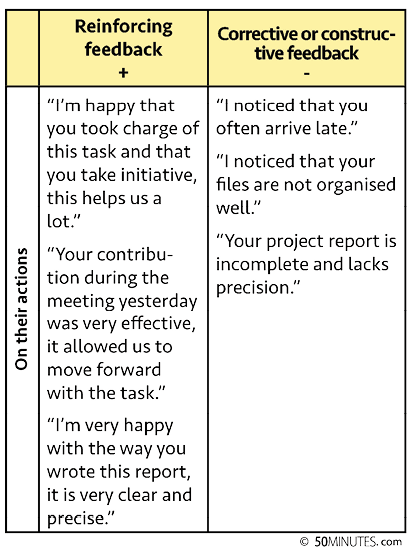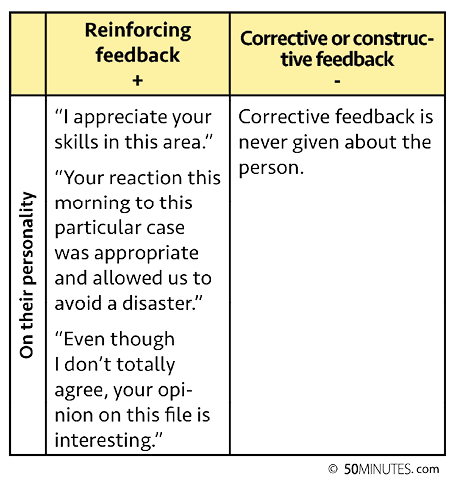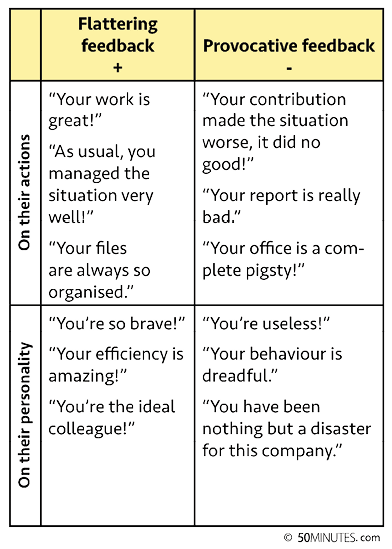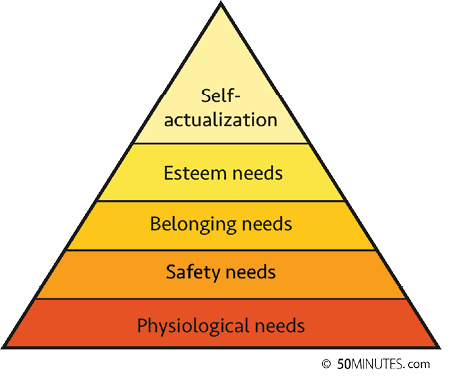. 50MINUTES - Constructive Feedback: The essentials of giving and receiving constructive criticism
Here you can read online . 50MINUTES - Constructive Feedback: The essentials of giving and receiving constructive criticism full text of the book (entire story) in english for free. Download pdf and epub, get meaning, cover and reviews about this ebook. year: 2017, publisher: 50Minutes.com, genre: Romance novel. Description of the work, (preface) as well as reviews are available. Best literature library LitArk.com created for fans of good reading and offers a wide selection of genres:
Romance novel
Science fiction
Adventure
Detective
Science
History
Home and family
Prose
Art
Politics
Computer
Non-fiction
Religion
Business
Children
Humor
Choose a favorite category and find really read worthwhile books. Enjoy immersion in the world of imagination, feel the emotions of the characters or learn something new for yourself, make an fascinating discovery.
- Book:Constructive Feedback: The essentials of giving and receiving constructive criticism
- Author:
- Publisher:50Minutes.com
- Genre:
- Year:2017
- Rating:3 / 5
- Favourites:Add to favourites
- Your mark:
Constructive Feedback: The essentials of giving and receiving constructive criticism: summary, description and annotation
We offer to read an annotation, description, summary or preface (depends on what the author of the book "Constructive Feedback: The essentials of giving and receiving constructive criticism" wrote himself). If you haven't found the necessary information about the book — write in the comments, we will try to find it.
Most of us find it difficult to deliver feedback: no matter how constructive we intend our comments to be, there is always a risk that the other person will feel attacked and react with defensiveness or even outright hostility. Similarly, when it is our turn to listen to feedback, many of us struggle to accept other peoples comments and make meaningful changes. However, by making you aware of your strengths, weaknesses and areas for improvement, constructive feedback can increase your self-awareness and self-confidence and give you and your team the added edge you need to succeed.
In 50 minutes you will be able to:
- Give yourself the best possible chance of success by adapting your approach to the person
- Be more receptive to feedback and use it to improve your performance
ABOUT 50MINUTES.COM | COACHING
The Coaching series from the 50Minutes collection is aimed at all those who, at any stage in their careers, are looking to acquire personal or professional skills, adapt to new situations or simply re-evaluate their work-life balance. The concise and effective style of our guides enables you to gain an in-depth understanding of a broad range of concepts, combining theory, constructive examples and practical exercises to enhance your learning.
. 50MINUTES: author's other books
Who wrote Constructive Feedback: The essentials of giving and receiving constructive criticism? Find out the surname, the name of the author of the book and a list of all author's works by series.


